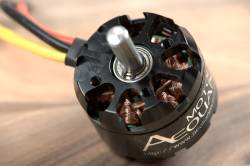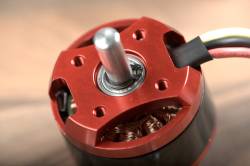Rustic Retreat
Hot Projects
Live broadcasts and documentation from a remote tech outpost in rustic Portugal. Sharing off-grid life, the necessary research & development and the pursuit of life, without centralized infrastructure.
 Subscribe to our new main project Rustic Retreat on the projects own website.
Subscribe to our new main project Rustic Retreat on the projects own website.
Hackerspaces, FabLabs and Open-Eco-Villages need tools to bootstrap their own individual environments. Although RepRaps, Makerbots and Lasercutters are more common these days, many groups are still lacking CNC routers/mills to create really solid tools or parts for bigger machines. Maybe some of the solutions presented here will inspire other groups, to build more CNC machines and extend our ability to make stuff on our own and for each other, by sharing plans how to build machines and plans for parts that can be made with these machines. Luckily we have been able to get a 3D printer so we can bootstrap a lot of the picoCNC parts ourselves now.
Due to Apollo's limited cargo capacity, there is simply no room for three machines: A RepRap/Makerbot to extrude plastic parts, a Laser-Cutter/Engraver for wood and acryl and a CNC Router for more heavy duty jobs. In order to maximize the usability of available cargo volume, a single gantry based 2.5D (X,Y,Z) DIY CNC frame will be used to host the following, quickly changeable, task related toolheads:
Building a CNC machining frame is in total contradiction to Apollo's usual requirements:
In this case there has to be some compromise, so the frame itself is going to be build from extruded aluminum profiles for easy assembly and hackability. To give it more weight and stability, the hollow parts of the profiles will be filled with a mineral casting (10% epoxy + 90% quartz sand/stones). This also is supposed to help reducing vibrations and noise, the machine is going to emit.
| 4 | Alu Profile 10 50×50 | mineral casting filled | 50x50x300 | 1000g |
| 2 | Alu Profile 10 50×50 | mineral casting filled | 50x50x300 | 1000g |
| 1 | Alu Profile 10 | Item 10 50×100 | 800x100x50 | 1000g | ? |
| 2 | Linear bearings | Hiwin EG/mgw series top/bottom | 470x18x15 | 1000g | ? |
| 4 | Linear carriages | Hiwin MGN09CZ0H | 30×27.5×12 | 40g | ? |
| 1 | Ball screw | Hiwin/Isel | 400x16x4 | 1000g | ? |
| 1 | Float Bearing Block | DCNC-Block | 60x20x26.5 | ? | 20 EUR |
| 2 | Belt Gear | HTD-3M Z24/9 | 25×20 | 15g | 15EUR |
| 2 | alu profile | mineral casting filled | 500x40x80 | 1000g |
| 4 | linear bearings | Hiwin MGW09 top/bottom | 500x18x7 | 1000g |
| 8 | linear carriages | Hiwin MGW9CZ0H | 30×50.7×12 | 40g |
| 2 | recirculating ball screw | Hiwin/Isel | 400x16x4 | 1000g |
| 2 | Shaft Coupler 0-Backlash ADS DCNC-D32-L32 |
http://cnc-laden.de/cnc-shop/Festlager-8mm/Festlager-8mm-Spindelenden-Nema-23.html
| 2 | linear bearings | Hiwin EG/mgw series top/bottom | 500x18x15 | 1000g |
| 4 | linear carriages | Hiwin MGN09CZ0H | 30×27.5×12 | 40g |
| 2 | recirculating ball screw | Hiwin/Isel | 400x16x4 | 1000g |
| 2 | NEMA23 Stepper | 3NM/4A 0.9° | 60x60x70 | 1000g |
This is a good basis to start calculations for LinuxCNC and the basic electromechanics design parameters, should be converted to metric system:
http://wiki.linuxcnc.org/cgi-bin/wiki.pl?Mechanical_Spreadsheet
Shops:
| A | # | Type | Model | Torque | Current | RespW | IndpW | Dim. (mm) | Mass | Source |
|---|---|---|---|---|---|---|---|---|---|---|
| X | 1 | NEMA23 | 3NM/4A 0.9° | 60x60x70 | 1000g | |||||
| Y | 2 | NEMA23 | ST6018M3008-B | 1.56Nm | 4.2A | 0.4 ohm | 1.38 mH | 60x60x56 | 770g | 60EUR |
| Z | 1 | NEMA23 | 3NM/4A 0.9° | 60x60x70 | 1000g |
To keep costs at a minimum, this high-speed direct-drive spindle is going to be hacked together from commonly available parts from the RC-Model sector, an ER16 Collet-Chuck and a newly designed Universal Mounting Block, that should make the spindle compatible to almost any machine in existence and imagination. The designated maximum cost should not exceed 100EUR, which should make it a really good alternative to commercial spindles, if the design can prove itself.
| Aeolian C5045 890KV | Power C5045 890KV | ||||
|---|---|---|---|---|---|
  |   |
||||
| Parameter | Datasheet | Real | Datasheet | Real | |
| Power | 1185W | n/a | 980W-1300W | n/a | |
| RPM/Volt (KV) | 890 | n/a | 890 | n/a | |
| Voltage | 6-28V | n/a | 12-32V | n/a | |
| Idle Current | 2.6A | n/a | n/a | n/a | |
| Resistance/Phase | 21mOhm | n/a | n/a | n/a | |
| Shaft Diameter | 7.9/8mm? | n/a | 8mm | n/a | |
| Diameter | 50mm | n/a | 50mm | n/a | |
| Length | 45mm | n/a | 45mm | n/a | |
| Weight | 210g | n/a | 224g | n/a | |
| Price/Source | EUR 59,80 | EUR 49,95 | |||
Related Mission-Logs:
howto-disassemble-a-brushless-motor
Spindle control and speed is managed comfortably with a ESC32 or vesc-open-source-bldc-esc brushless engine speed controller originally intended to control our drone motors. Due to the open firmware nature of this module and the possibility to control the ESC through serial/CAN interface another module was purchased (additionally to the ones purchased for our Drone project) to be tested for the spindle setup.
Alternatively, you can hack/use a simple 555 circuit like the following and control another off-the-shelf RC ESC with that:
In the future, a combination of an ESC32 with fully integrated LinuxCNC control may be a good solution to get software controlled spindle start/stop and RPM.
Angular contact ball bearings
| Candidate | d | D | B | Max. RPM |
|---|---|---|---|---|
| INA 30/8-B-2Z-TVH | 8mm | 22mm | 11mm | 25.000 |
| INA 108-TVH | 8mm | 22mm | 7mm | 36.000 |
Deep groove ball bearings
| Candidate | d | D | B | Max. RPM |
|---|---|---|---|---|
| INA 608-2Z | 8mm | 22mm | 7mm | 31.500 |
Step 2:
1000mW blue laser diode combined with an aluminum block acting as a big heatsink and mounting block. Will only really cut paper/cardboard for stencils and can be used to engrave different materials. This should make it easy to create front-panels and descriptive UI's for other hardware projects.
Step 3:
Research currently available extruder options and their usability in this scenario. Find sources.
Open Source Computer Aided Design and Machining software
The following book always comes up again, when it comes to improving metalworking skills. If someone has a copy and could lend it or wants to sponsor the book (ebook prefered): http://www.amazon.de/Metalworking-Sink-Swim-Machine-Shop/dp/0831133627